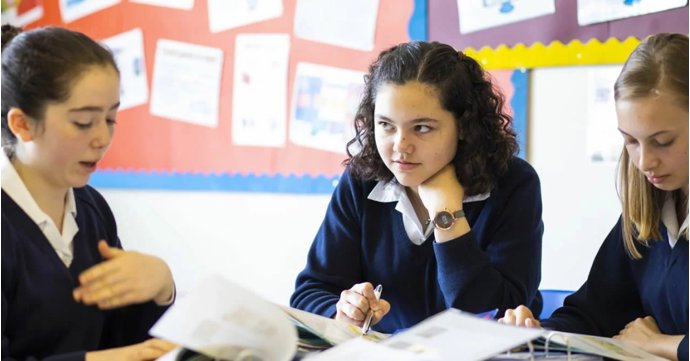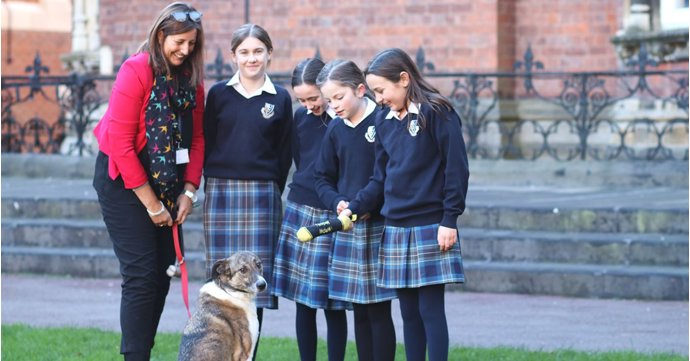With schools across Gloucestershire closed to all but critical workers’ and vulnerable children, many of the county’s primary and secondary students are learning remotely from home until at least February 2021 half-term.
SoGlos spoke to Malvern St James Girls’ School, with the independent school sharing some of its expert advice about online learning to help parents make the best of their home-schooling experience.
1. Stay positive while learning remotely
Staying positive may seem more difficult than ever in the midst of a global pandemic. With online learning comes inevitable pressure for caregivers, most of whom are working from home as well as supporting their children’s education during lockdown.
First thing’s first: breathe. Parents and carers are not trained to be teachers, nor are they expected to be. Accepting that each day may not go to plan and that it’s alright to find things hard can help to keep adults calm while supporting their children, as well as realistic when managing their expectations.
While it can be tempting for caregivers to compare their remote learning experiences to others’, it’s important to remember that every school’s remote learning programme is unique and everyone is doing their best in their individual circumstances. So give yourself a break.
2. Establish a routine for remote learners
As the Coronavirus pandemic continues, so many things are out of our control. However, home routines can provide an all-important structure, sense of predictability and normality for children and families.
While it’s easy for boundaries to merge when working, learning and living at home, maintaining a clear separation between work and home life is key. This can mean wrapping up at the same time every day; sitting down together for family meal times; and keeping the structure of schooldays different from weekends.
From maintaining regular bed times to ensure good quality sleep, to creating space for family activities, routines can help families take a holistic approach to wellbeing. Schedules that consider each person’s physical, emotional, mental and social needs will help to manage stress levels and keep children engaged during the school day, too.
3. Set achievable goals for remote learning
It’s good practice for adults and children to set specific, measurable, achievable, relevant and time-based – or SMART – goals while learning online. Goals should be as clear as possible; doable within a set timeframe; relevant to wider learning objectives; with markers that can be met to prove you’re making progress.
For example, hour-long sessions can be broken down into four 15-minute chunks of work; and 20 questions can be answered in blocks of five, with short breaks in-between.
Caregivers can help children set deadlines for themselves, using alarm clocks, the stopwatch on a phone or even the timer on the kitchen cooker – which should in turn help with time management.
4. Create a dedicated working space for remote learners
If possible, creating a special place for each child to complete their school work, with a table or desk and some natural lighting, can be helpful. Even better if it can be separate from their bedroom.
Headphones can be used to block out noise from distracting siblings or working parents, making it possible for families to work in one room. Meanwhile, families with Playstation or Xbox consoles can use them to access Microsoft Teams and Google Classroom – handy if the computer is being used by someone else.
While they’re completing schoolwork, try to make sure children are comfortable with good posture, and that their eyes are focused towards the top of the screen if they’re looking at a laptop. If older children have mobile phones, encourage them to leave them in a separate room and close down all other apps on their digital devices while taking part in online lessons.
5. Make use of free resources while learning remotely
Schools are expected to provide a minimum of three hours’ remote learning per day for children aged five and seven; four hours for pupils aged between seven and 11; and five for secondary school students up to the age of 16.
Outside of those teaching hours, remote learners may want to make use of additional resources. Locally, Slimbridge Wetland Centre has developed a 12-week home learning programme, as well as fun indoor and outdoor activities with a wetland theme; while Cheltenham Literature Festival has made its 2020 line-up of family and schools events available online until February half term.
Elsewhere, Oak National Academy offers pre-recorded online lessons, from primary through to GCSE-level, and the BBC is showing curriculum-based programmes for primary pupils on CBBC and secondary students on BBC Two.
6. Take regular breaks from remote learning
When you have control over the timetable, consider shortening lesson times to allow for more regular breaks between sessions – with Malvern St James running its online classes for 45 minutes instead of the usual hour.
Parents and carers can inspire children by modelling relaxation away from the screen. Encourage them to step outside for a breath of fresh air or, if you don’t have a garden, aim to get out for a local walk.
If the weather is looking bleak, some enthusiastic star jumps, loud singing to a favourite song, or bonding time with a pet are fantastic ways to reenergise those weary brains.
7. Embrace new opportunities while learning remotely
Remote learning isn’t easy, but with challenges come exciting opportunities, both in- and outside the virtual classroom.
There are plenty of chances for learning that aren’t necessarily academic. And the pandemic is a great time to verse children in important life skills, from cooking and cleaning to gardening and even vehicle maintenance, perhaps.
Online learning is also a great opportunity for children to take charge of their learning and gain confidence. Raising a hand in class can feel daunting, while feeling the pressure to perform in front of peers can be exhausting – it can be much easier for pupils to take the initiative to share ideas online or ask their teacher questions digitally.
8. Encourage independence in remote learners
Most children over the age of seven should be capable of working independently. While it might be tempting to sit with primary age pupils and guide them through their tasks, it’s helpful for children to make mistakes, learn from them and understand that it’s alright if things don’t always go perfectly to plan.
Carers should see themselves as technicians, available to reassure stressed students and talk through problems, but not as the solution. If a child gets stuck, they should be encouraged to message their teacher for help.
Meanwhile, practicing to study independently will be helpful for older students as they prepare to transition into higher education or the workplace.
9. Stay organised while learning remotely
To keep a child’s workload organised, it’s a great idea to make a list of reminders for each school day and help them prepare the night before. This can be checking their timetables for the following day before logging off, or staying on top of printing and preparing resources to avoid frantic starts to lessons.
An organisational system can also help pupils to feel in control – whether that’s having individual piles of work for each day; separate notebooks for different subjects; or using a specific, coloured pen for each topic.
Children should be encouraged to practice important skills in self-management by being prompt for their online lessons; regularly checking for messages from their teachers; and making sure they submit their work when required.
10. Seek support while learning remotely
Effective learning and personal development happen when schools, pupils and parents all work together.
If a child is struggling, listen to them and take note of their concerns, reassuring them that their feelings are valid and aim to work together to find a solution, all while making sure to feed back to the school, if necessary.
Remote learning can be difficult for everyone, so keep in touch with teachers and staff. Whether you have worries about workload or wellbeing, or simply want to chat about how things are going, schools and colleges are on hand to provide academic and pastoral support.





















